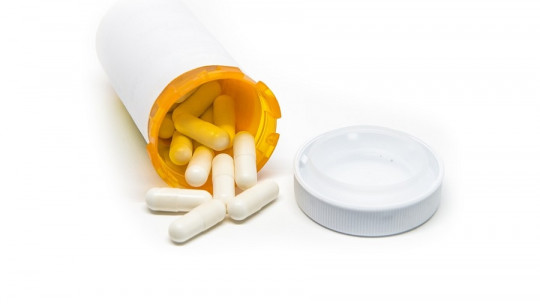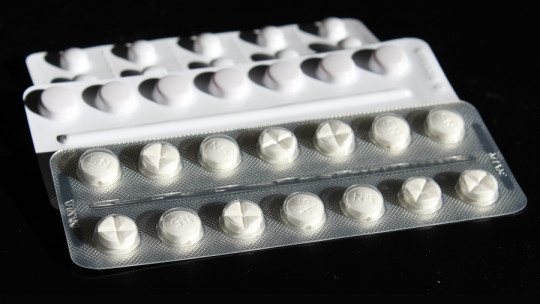Carbamazepine is an anticonvulsant and mood stabilizer drug used in the treatment of bipolar disorder and to control epileptic seizures.
In this article we will learn about the main characteristics of this drug, its uses in therapy and indications, in addition to explaining its side effects and contraindications.
Carbamazepine: general characteristics
carbamazepine It is a drug from the category of classic antiepileptics It is marketed under different names: Carbamazepine EFG, Carbatrol, Equetrol, Tegretal and Tegretol. To date, its mechanism of action is not completely known, but it is known that it acts on sodium channels.
This drug is used to treat partial epileptic seizures. It is also used as an alternative to lithium salts in bipolar disorder, and in patients with manic attacks who are resistant to antipsychotics.
Carbamazepine is considered anot one of the reference drugs among anticonvulsants, after phenobarbital
Mechanism of action
Its mechanism of action is still not known exactly. It’s known that stabilizes neuronal membranes that are in a state of hyperexcitation, prevents repeated discharges in neurons and reduces the synaptic propagation of the nerve impulse.
To prevent repetitive shocks from occurring, carbamazepine blocks voltage-gated sodium channels in depolarized neurons In this way, it manages to selectively intervene on those neurons that are having an epileptic discharge. This is the main mechanism of action of this drug and the reason for its anticonvulsant capacity.
In addition, it seems to affect NMDA receptors and the flow of calcium through the neuron membrane. Reduces glutamate release and stabilizes neuronal membranes which explains its antiepileptic capacity.
In relation to its ability to treat manic attacks of bipolar disorder, it appears to depress the turnover of dopamine and norepinephrine.
Administration
carbamazepine administered orally only in the form of tablets. Its absorption is slow and irregular, and it must be taken with food in the stomach, since the digestion of food helps in its absorption.
Indications: in what disorders is it used?
This drug is indicated for the treatment of epilepsy , especially for epileptic seizures with simple or complex symptoms, regardless of whether there is loss of consciousness or not. It is also used for tonic-clonic epilepsy.
It has been used to treat pain associated with terminal neuralgia It is important to note that it is not an analgesic drug and, therefore, its use is not recommended to treat common pain.
It is also sometimes used as a prophylactic substance for mania in bipolar disorder
Carbamazepine is suitable both for monotherapy, that is, only this drug is used, and for combined treatment. In any case, its use and method of use It depends on the instructions of the medical team that has evaluated the specific case in a personalized way.
Use in epilepsy
Whenever possible, it is advisable to use carbamazepine as monotherapy. The treatment It starts with low doses and gradually increases them until the therapeutic effect is achieved It is recommended to determine plasma levels in order to establish a correct dosage.
If epilepsy therapy with another drug has previously been followed, the introduction of carbamazepine will be done gradually, maintaining the dose of the previous drug and gradually regulating it.
The administration of this drug varies depending on the age group In children under 4 years of age, the recommended dose at the beginning of treatment is 20 to 60 mg per day, increasing every two days. For people over 4 years of age, treatment can be started with 100 mg per day, increasing the doses by 100 mg each week.
In adults, doses of 100 to 200 mg are started, once or twice a day. Little by little the doses are increased, generally reaching 400 mg two or three times a day. There are cases of patients reaching doses of 1600 mg per day in order to have a therapeutic response.
Side effects
This drug can cause the following adverse reactions, most of them when too high a dose of carbamazepine has been given: dizziness, ataxia, drowsiness, headache, fatigue, accommodation disorders, skin problems such as allergies and hives, nausea, vomiting, dry mouth, weight gain, hyponatremia, gastrointestinal problems.
Notably an overdose can lead to death If the patient has been given too high a dose, stomach lavage and hemoperfusion should be performed, depending on the severity.
Contraindications
The use of this drug is not recommended in people who have hypersensitivity to structurally related medications, such as tricyclic antidepressants. It is also not indicated in patients who have suffered bone marrow depression, atrioventricular block and hepatic porphyrias
Carbamazepine should not be combined with monoamine oxidase inhibitors (MAOIs), and if the patient has been treated with these inhibitors, it is recommended to wait at least two weeks after completing treatment.
Special precautions for use
Like any other psychoactive drug, carbamazepine must be prescribed under medical supervision
In patients with a history of liver, kidney and heart problems, special care should be taken. Also if there have been adverse hematological reactions to other drugs or there have been interrupted periods of treatment with this drug. It must be assessed whether the risks are less than the benefit.
1. Hematological effects
This drug has been associated with cases of agranulocytosis and aplastic anemia There may be a temporary decrease in platelets, although it is not common for it to increase and cause blood problems. In any case, before and during treatment, it is recommended to do blood tests.
If there are problems in the bone marrow, the usual thing is to suspend the treatment.
2. Serious dermatological reactions
Treatment with carbamazepine has been associated with the appearance of serious, sometimes fatal skin problems, such as toxic epidermal necrolysis and Stevens-Johnson syndrome These types of reactions occur between 1 and 6 in every 10,000 people treated in Caucasian populations, and this risk is ten times higher in Asian populations.
Below we discuss the reason for the difference between these two populations.
2.1. HLA-B 1502 allele
This allele is common in Asian populations, especially from China and Thailand It may involve dermatological problems when treated with carbamazepine.
It is for this reason that in people of Asian race it is recommended before starting treatment to do a gene analysis to ensure that the treatment will not cause this type of problem.
2.2. HLA 3101 allele
This other allele has also been related to manifesting serious dermatological reactions to carbamazepine
However, unlike the previous one, this allele is present in Caucasian and Japanese populations, and is not common. However, there is still not enough evidence to imply that this allele is actually the one involved in dermatological problems in these populations.









